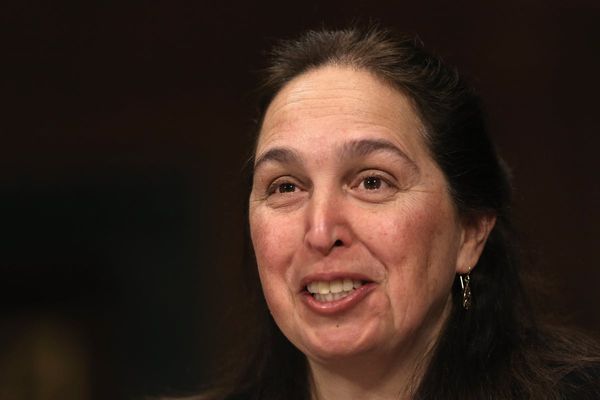ANALYSIS — It might be the end of personal political brands in congressional races, which could complicate Democratic chances of flipping the Senate next year.
Heading into the 2024 election, Senate Democrats had a tough catalog of states to defend and needed their incumbents to continue overperforming to have any chance of maintaining their narrow majority. But in many key races, Democratic nominees couldn’t replicate their magic from six years ago, and some of them faced more difficult political environments in their states.
They included Montana’s Jon Tester and Ohio’s Sherrod Brown, who had both long demonstrated significant crossover appeal in their Republican-leaning states.
In 2018, Tester outperformed a typical statewide Montana Democrat by 5.2 points, according to Inside Elections’ Vote Above Replacement metric, on his way to a narrow victory over Republican Matt Rosendale.
But last fall, Tester’s VAR score dropped to 4.4 points, and perhaps more importantly, Montana as a state shifted significantly to the right. Inside Elections’ Baseline metric showed Republicans with an advantage of +6.6 points in Big Sky Country in 2018, but that jumped to +15.5 points after the 2024 elections. Tester lost to Republican Tim Sheehy in November as the GOP netted four seats to win control of the Senate.
One of those seats was in Ohio, where Brown lost to Republican Bernie Moreno. The Buckeye State hasn’t shifted much politically over the past six years: Republicans had a Baseline advantage of +9.6 points in 2018 and +10 points in 2024. But while Brown overperformed once again, with a +2.0 VAR, it was significantly lower than his +9.3 VAR in 2018, when he faced a much weaker candidate.
The VAR metric measures the strength of political candidates relative to a typical candidate from their party within the same state. It’s the political version of baseball’s Wins Above Replacement, which assesses a player’s value to a team compared with a replacement-level player.
The initial benchmark is derived using the Baseline metric, which captures a state’s political performance by combining all federal and state election results over the past four cycles into a single average. (Technically it’s a trimmed mean, which is the average after throwing out the highest and lowest totals.) VAR is then simply the candidate’s share of the vote minus the party’s Baseline.
Democratic struggles
Even though some Senate Democratic nominees outperformed Vice President Kamala Harris at the top of the ticket, their performances weren’t necessarily remarkable and, similar to Tester and Brown, were down compared with their own elections six years earlier.
Democratic Sen. Jacky Rosen won reelection in Nevada as her state backed Donald Trump for president. But she posted a -0.8 VAR in 2024, compared with a +4.6 VAR in 2018. In Wisconsin, Sen. Tammy Baldwin narrowly won reelection but underperformed a typical Democrat with a -0.3 VAR, down considerably from her +6.5 VAR score in 2018.
The Casey name used to be political gold in Pennsylvania, but that’s not the case anymore. Democratic incumbent Bob Casey Jr. turned a +3.7 VAR from 2018 into a -1.2 in 2024, in the process losing his bid for a fourth term to Republican Dave McCormick. Pennsylvania has become more Republican in the past six years, shifting from a Baseline Democratic advantage of +6.6 points in 2018 to +1.7 last year, but Casey didn’t do himself any favors with his performance.
In Minnesota, Democratic-Farmer-Labor Sen. Amy Klobuchar didn’t have a competitive race in either 2018 or last year, when she faced a particularly flawed candidate. Still, her VAR score saw a marked drop from +8.1 to +4.5.
The highest-performing Democratic candidate wasn’t officially a Democrat. Nebraska Senate hopeful Dan Osborn posted an impressive +8.7 VAR, but he ran as an independent with Democratic support and thus had more of an opportunity to gain votes from independents and Republicans. Nevertheless, it was still an impressive performance.
Running as an independent doesn’t guarantee a candidate more votes. Al Gross tried the same thing in Alaska in 2020 but ended up narrowly underperforming a typical Democrat (-0.4 VAR).
Some Republicans overperform
In Maryland, former Gov. Larry Hogan had one of the strongest performances of any Senate candidate in the country in 2024, but the Republican’s double-digit loss to Democrat Angela Alsobrooks showed that personal brands aren’t the antidote to a state’s partisanship. Hogan posted a +8.3 VAR and still lost by 12 points. It didn’t help that Trump lost Maryland by almost 30 points at the top of the ticket.
A couple of Republican senators improved on their 2018 performances but still weren’t particularly strong candidates. Sen. Ted Cruz won reelection but still underperformed a typical statewide Republican in Texas. He had a -1.6 VAR in 2024, which was an improvement from his -4.7 against Democrat Beto O’Rourke six years earlier.
In Florida, Sen. Rick Scott turned a -1.4 VAR from his narrow 2018 win into a +0.8 VAR last fall as he was winning a second term by 13 points. The Sunshine State has become more Republican in the past six years, with the party’s Baseline advantage going from +4.5 points to +10.3 points.
One Senate Republican in a competitive race who had a weaker VAR in 2024 was Nebraska’s Deb Fischer, who hasn’t ever been a particularly strong candidate. She won reelection by defeating Osborn by nearly 7 points but with a -7.1 VAR, down from -3.1 in 2018, and after considerable late help from Republicans outside the state.
Looking ahead to 2026
The struggle to overperform could be a warning sign for some senators up for reelection in 2026.
Michigan Democrat Gary Peters overperformed only slightly in 2020, with a +0.6 VAR, so he doesn’t have a lot of room for error. But the Wolverine State is more Democratic now than it was in his last election. Despite Trump winning Michigan last fall, Democrats have a Baseline advantage of +4.6 points now, compared with 1.8 points in 2020.
Georgia’s partisan swing should similarly help Democratic Sen. Jon Ossoff. Republicans enjoyed a +7.0 Baseline advantage in 2020, compared with their current +4.1 edge. And Ossoff earned a formidable +4.6 VAR in his initial victory. But he could face a stronger opponent this cycle.
On the Republican side, North Carolina Sen. Thom Tillis, who had a -1.9 VAR in 2020, is also vulnerable. The Tar Heel State remains very competitive, with the GOP holding a Baseline advantage of 2.2 points, the same as four years earlier.
Maine’s Susan Collins has consistently been one of the highest-performing senators. The Republican had a +5.8 VAR in her 2020 race, when it had looked like she was the underdog. It’s unclear how strong of a challenger she’ll face in 2026, but Maine has become more Republican in recent years: The Democratic Baseline edge has dropped from 9.4 points to 4.3 points in the past four years.
Democrats looking to retake the Senate next year already face a tough task. They need to flip four seats for the majority, but Collins is the only Republican up for reelection in a state won by Harris. Democrats are going to need quality, high-performing candidates, whether incumbents or challengers, to have a real chance of winning those seats.
The post How the decline of personal political brands hurts Senate Democrats appeared first on Roll Call.







